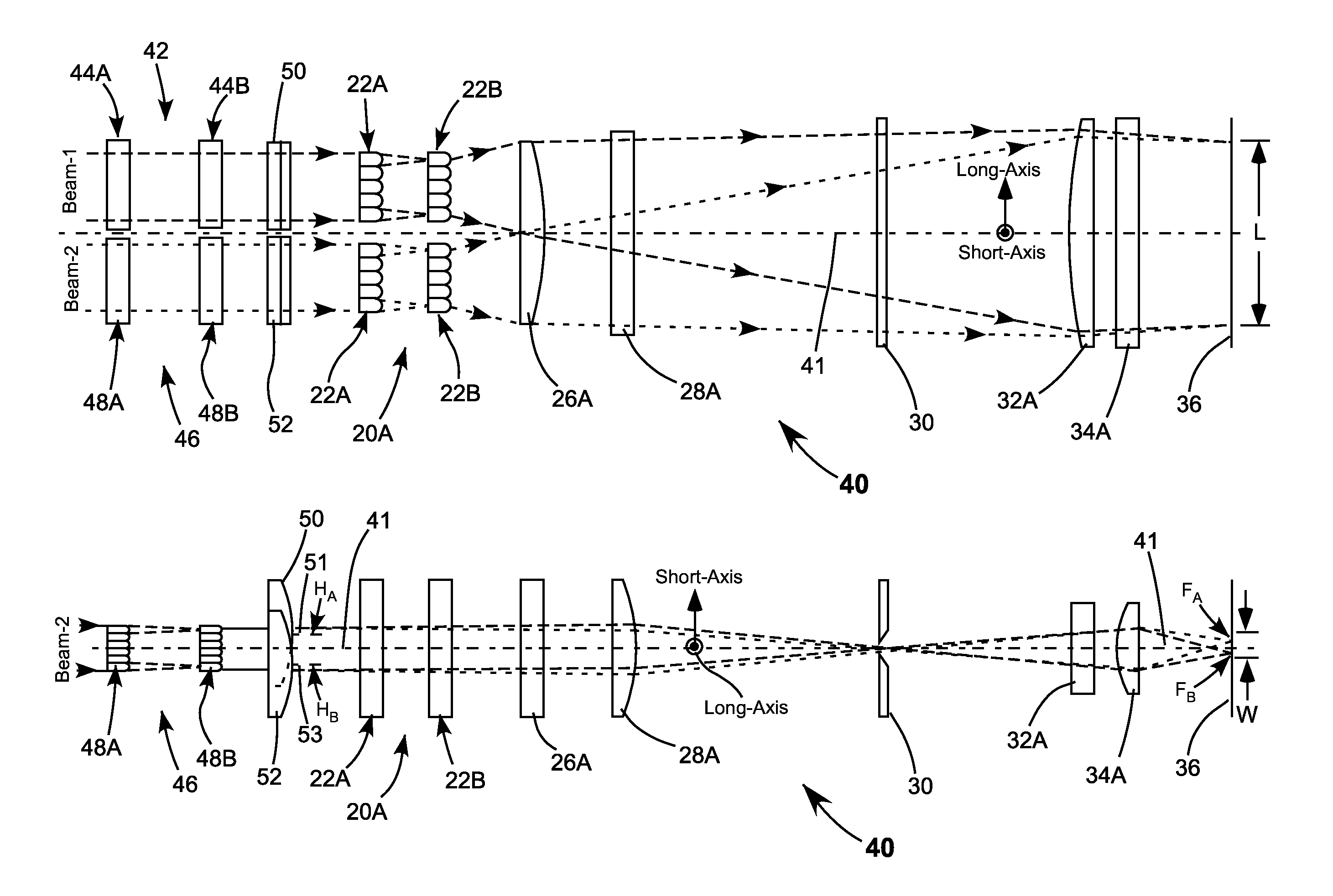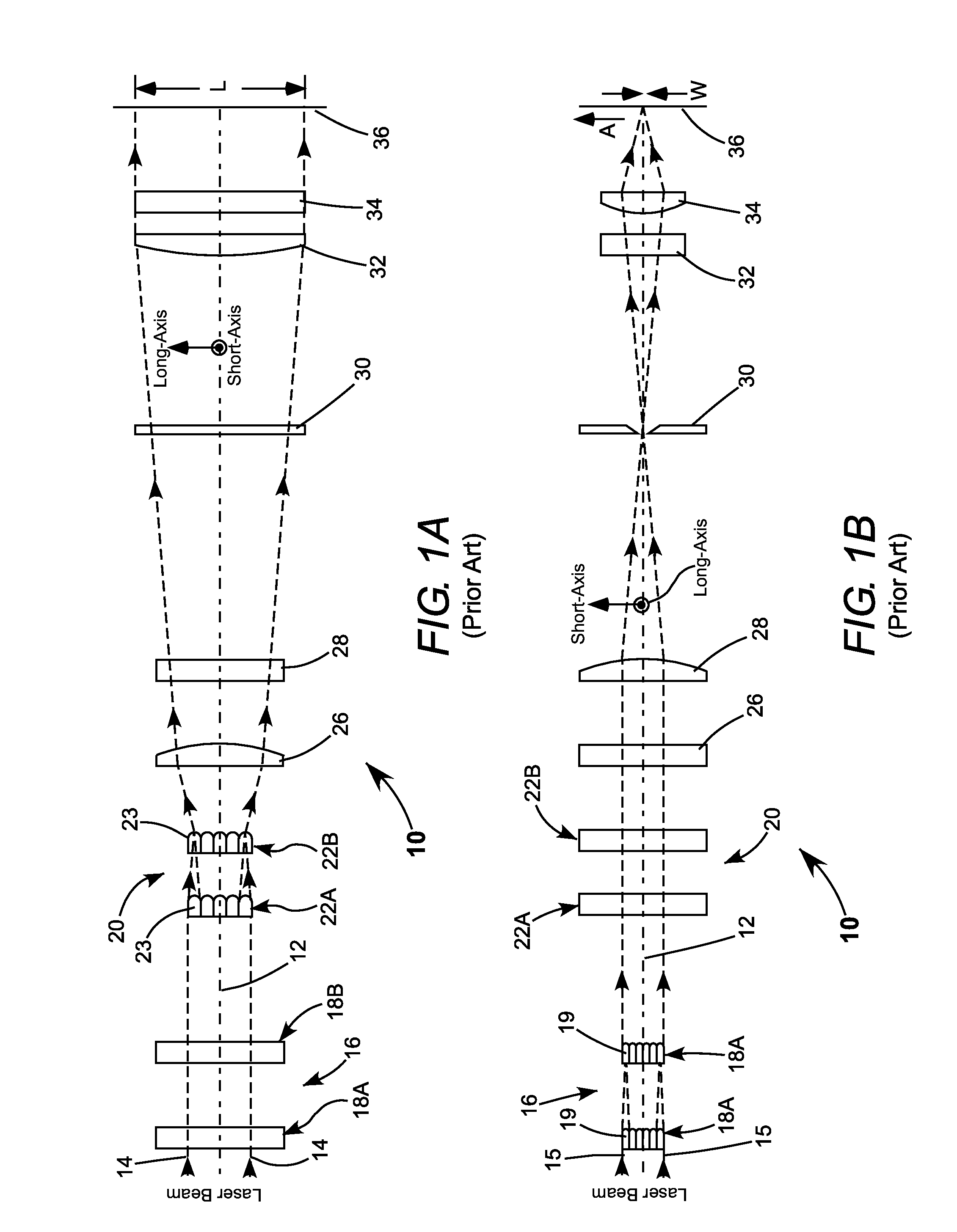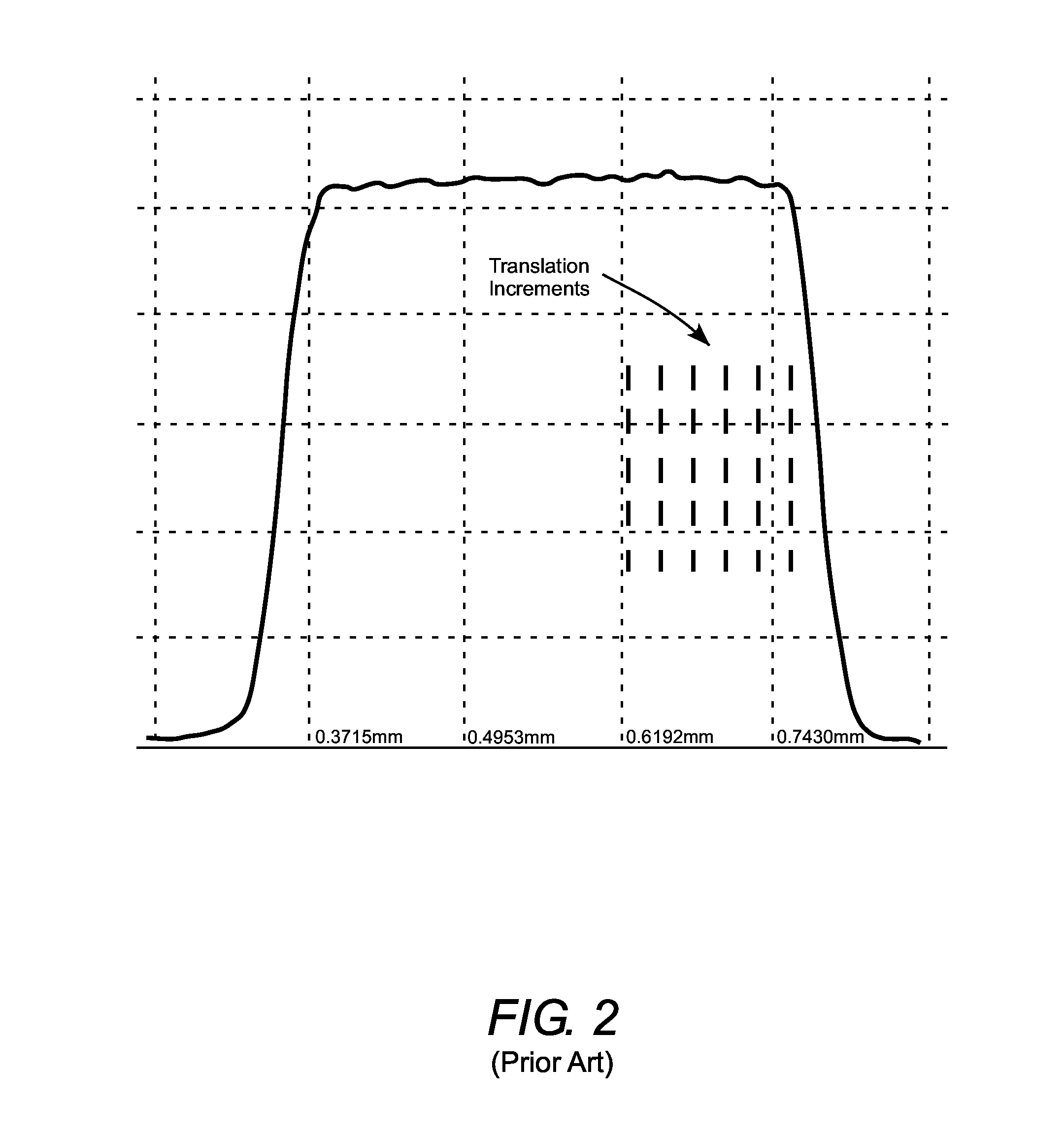Excimer laser apparatus projecting a beam with a selectively variable short-axis beam profile
a laser and selectively variable technology, applied in the direction of optical elements, instruments, manufacturing tools, etc., can solve the problems of waste of laser energy and small error margin for optimum energy density (oed)
- Summary
- Abstract
- Description
- Claims
- Application Information
AI Technical Summary
Problems solved by technology
Method used
Image
Examples
Embodiment Construction
[0023]Referring now to the drawings, wherein like components are designated by like reference numerals, FIG. 3A and FIG. 3B are respectively long-axis and short-axis views schematically illustrating a preferred embodiment 40 of excimer-laser annealing apparatus in accordance with the present invention. Apparatus 40 has a system axis 41. Apparatus 40 is configured to accept two laser beams designated beam-1 and beam-2. The beams propagate parallel to each other spaced-apart in the long-axis direction of the apparatus and aligned one above the other in the short-axis direction of the apparatus.
[0024]The two beams can be beams from two separate excimer lasers or can be created by dividing a single input beam. Examples of two separate beams depicted in FIG. 5A, and FIG. 5B. Examples of creating two beams from a single beam are shown in FIG. 5C and FIG. 5D.
[0025]In the example of FIG. 5A there are simply two beams from two lasers, one beam from laser-1 and one beam from laser-2. These ca...
PUM
| Property | Measurement | Unit |
|---|---|---|
| length | aaaaa | aaaaa |
| length | aaaaa | aaaaa |
| width | aaaaa | aaaaa |
Abstract
Description
Claims
Application Information
 Login to View More
Login to View More - R&D
- Intellectual Property
- Life Sciences
- Materials
- Tech Scout
- Unparalleled Data Quality
- Higher Quality Content
- 60% Fewer Hallucinations
Browse by: Latest US Patents, China's latest patents, Technical Efficacy Thesaurus, Application Domain, Technology Topic, Popular Technical Reports.
© 2025 PatSnap. All rights reserved.Legal|Privacy policy|Modern Slavery Act Transparency Statement|Sitemap|About US| Contact US: help@patsnap.com



